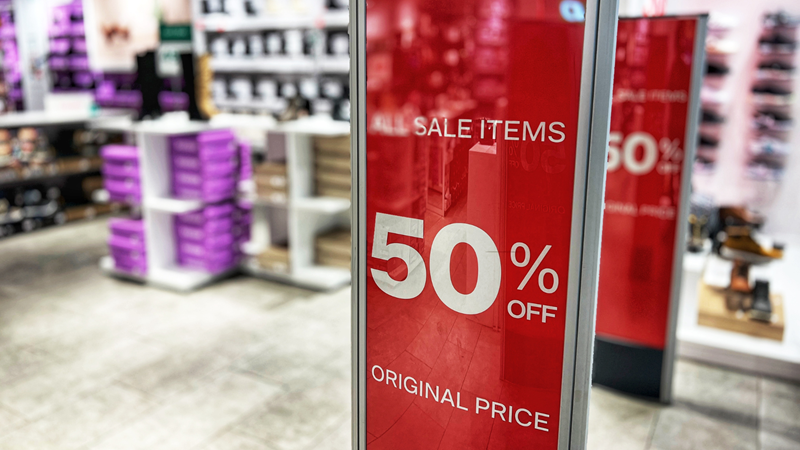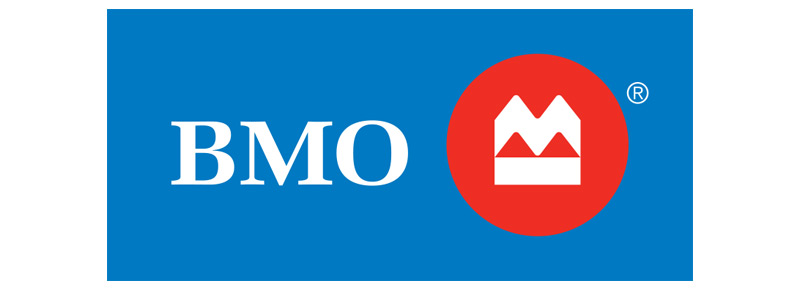The impact of open banking on Canadian consumers and marketing strategies
Open banking, a transformative concept in the financial world, has reshaped how financial data is shared and utilized. At its core, open banking is an ecosystem that allows third parties, like financial technology companies (fintechs), to access consumer banking data through APIs (Application Programming Interfaces), enabling the development of innovative financial products and services.
Budgeting and financial management apps are a couple of ways fintechs have leveraged open banking. These innovative solutions allow consumers to see their information and insights in one place instead of logging into multiple apps and accounts. Rooted in principles of transparency, competition and consumer empowerment, open banking has gained global traction, with success stories in the United States, United Kingdom, Australia and the EU.
In Canada, open banking is expected to be implemented in 2026, marking a significant step forward. This article explores the impact of open banking on the Canadian banking sector, its implications for consumers, and the evolving role of marketers in this dynamic environment. Drawing on insights from industry reports, case studies and thought leadership discussions, it delves into how open banking could reshape Canada’s financial landscape and help Canada improve its productivity problem.
The current state of open banking in Canada
Canada’s journey toward open banking has been gradual, with implementation by the federal government estimated to take place in 2026. According to Gowling WLG’s timeline of open banking in Canada, the regulatory environment is evolving to prioritize consumer protection and data security. Major players, including traditional banks as well as fintechs like Wealthsimple and Koho, are actively exploring open banking initiatives.
The current state of productivity in Canada across sectors
As of 2022, The Bank of Canada notes that Canadian productivity – how much value an economy is producing for every hour worked – has fallen to just 71 per cent of that of the United States and is amongst the lowest in the G7. The biggest area of concern, according to the Bank of Canada, is competition. Competition drives companies to become more productive by innovating and finding ways to be more efficient. In doing so, competition can make the whole economy more productive and benefit the end consumer.
Increased competition and innovation
Open banking is fostering a more competitive landscape in the United States and United Kingdom. Traditional banks are increasingly collaborating with fintech companies to offer innovative financial products and services. For example, partnerships between banks and fintech firms have led to the development of budgeting apps, personalized investment platforms and seamless payment solutions. These collaborations are driving innovation and improving customer experiences.
However, as highlighted in The Globe and Mail podcast, The Decibel, open banking could disrupt the dominance of Canada’s big banks by leveling the playing field for smaller players and making it easier to switch banks. In Canada, 80 per cent of bank account holders have never switched accounts. This increased competition could force traditional banks to innovate faster and improve their offerings to retain customers.
Operational challenges and opportunities
While open banking presents numerous opportunities, it also comes with challenges. Data security and privacy remain top concerns, as the sharing of financial data increases the risk of breaches. The roughly nine million Canadians using fintech apps today are likely providing their banking login credentials to these apps through an unsecure method like screen scraping which could void their electronic banking warranty. Once implemented, open banking will provide secure, regulated APIs that eliminate the need for unsecure methods like screen scraping and ensure consumer protections remain intact.
Additionally, banks must invest in upgrading their infrastructure and technology to support open banking APIs. However, these challenges also create opportunities for banks to differentiate themselves by prioritizing security and innovation.
Global case studies
According to the Boston Consulting Group, there are several applications of open banking across financial services today. Banco Bilbao Vizcaya Argentaria (BBVG), a multi-national financial services company from Spain, leverages open banking to streamline small business lending, using real-time data for faster, more accurate credit decisions. Nordea Bank, headquartered in Helsinki, Finland, enables personal financial management through third-party apps, helping users aggregate accounts and gain insights into spending and savings. Klarna, a Swedish fintech, utilizes open banking for payment initiation and Buy Now, Pay Later (BNPL) services, reducing transaction costs and enhancing customer checkout experiences.
These examples highlight some of the ways open banking fosters efficiency, customer empowerment and innovative payment solutions.
Impact on consumers
There are a number of ways this can impact consumers, including enhancing customer experience, improving financial inclusion and literacy, and building trust by addressing concerns and risks for consumers.
Open banking empowers consumers by providing them with greater control over their financial data. Personalized financial products and services, such as tailored loan offers and investment advice, are becoming more accessible. Consumers can also use financial management tools to consolidate their accounts and track spending across multiple platforms, simplifying their financial lives.
Open banking has the potential to improve financial inclusion by making financial services more accessible to underserved populations. For example, individuals with limited credit history or newcomers to Canada can use alternative data to access loans and other services. Additionally, open banking platforms often include educational resources, helping consumers make informed financial decisions, particularly for consumers who often shy away from engaging in meaningful conversations with financial advisors and lack financial literacy.
Despite its benefits, open banking raises concerns about data privacy and security. Consumers may worry about how their financial data is being used and shared. There is also the risk of increased financial fraud, as cybercriminals target open banking systems. Addressing these concerns is critical to building consumer trust.
The role of marketers in the open banking landscape
Marketers play a crucial role in the open banking ecosystem by leveraging data to understand consumer behaviour and preferences. By analyzing consumer-consented transaction data and spending patterns in compliance with privacy regulations, marketers can develop innovative financial products, targeted campaigns that resonate with consumers.
Open banking enables marketers to access consumer-consented data within established regulatory frameworks and privacy protections. For traditional banks, marketers will need to work on data and AI driven engagement strategies to retain their customer base.
Open banking will help marketers deepen client relationships – one of the key retail banking strategies – by offering tailored products, advice and solutions for clients. Consumer-consented data sharing should allow for enhanced personalization while maintaining required privacy controls and regulatory compliance. Banks will need to strengthen security and compliance policies with robust consent management, identity verification and fraud detection mechanisms. Cultural and organizational change to cultivate agility, innovation and cross-functional collaboration will be crucial to compete with fast-moving fintechs and adapting to open ecosystems will require a mindset shift.
On the other hand, open banking should help the growth of Canada’s fintech sector and increase the number of new entrants. The increase in competition should result in more aggressive acquisition strategies and marketers battling for consumer attention and market share. With the federal government’s reduced immigration targets, banks and other market players will need to find new ways to grow, retain and acquire customers.
Trust is paramount in open banking. Marketers must prioritize transparency by clearly communicating how consumer data is used and protected. Educational campaigns can help demystify open banking and address consumer concerns. Fortunately, according to Environics, traditional banks in Canada are still perceived as more trustworthy than fintechs and so, they have an opportunity to maintain their leadership position when rolling out secure open banking applications.
Regulatory frameworks will ensure that all open banking implementations include robust consent mechanisms, data minimization principles, and consumer rights to control their financial information
Collaboration is key to success in the open banking era. Marketers can work with fintech and banking partners to create co-marketing initiatives that highlight the benefits of open banking. For example, joint campaigns promoting budgeting apps or investment platforms can attract tech-savvy consumers.
Successful marketing strategies: An example
In the UK, where open banking is more established, brands like Cleo have successfully used open banking, AI, and data-driven marketing to attract customers. Cleo is a digital assistant that gives users tips and feedback on how they’re managing their finances. The brand has positioned itself to attract a younger millennial and Gen Z demographic. A third of British adults aged 18-34 have used open banking powered apps compared to just 6 per cent for those aged 55 and over. This demographic is more tech-savvy and willing to provide access to their data if they are getting something in return.
Cleo has gained more than 7 million users with its authentic brand and messaging. The budgeting app uses a natural language chat feature to prompt consumers to save or spend after gaining insights from their spending and income data. Consumers can even ask Cleo to “hype” or “roast” them. This feature will prompt Cleo to give positive or negative reinforcement and help the consumer build better financial habits. The app is an excellent example of how marketers and brands can use open banking data and present it in a meaningful way that puts the customer experience at the forefront.
Conclusion
Open banking is poised to transform the Canadian financial landscape, offering benefits for banks, consumers and marketers alike. While challenges remain, the opportunities for innovation and growth are immense. As Canada continues its journey to adopt open banking, marketers must embrace this shift by leveraging data, building trust, and collaborating with industry partners. The future of open banking in Canada is bright, and those who adapt will thrive in this new era.
Sources:
- Gowling, A timeline of the development of open banking in Canada
- Bank of Canada, Time to break the glass: Fixing Canada’s productivity problem
- The Globe and Mail, The Decibel: What open banking could mean for you
- MoneySense, It’s probably time you switched banks—4 easy steps for Canadians
- BCG, The Power of Open Banking: Exploring the Next Wave of Use Cases
- Environics Research, Acceptance of Open Banking Among Canadians: Insights from Recent Survey
- Missive, Effective audience segmentation for open banking could be the key to unlocking growth
- CNET, Cleo Budgeting App Review: Can AI Make Money Management Fun?
- Forbes, Meet Cleo, The British Fintech Using AI To Close In On Unicorn Status




































